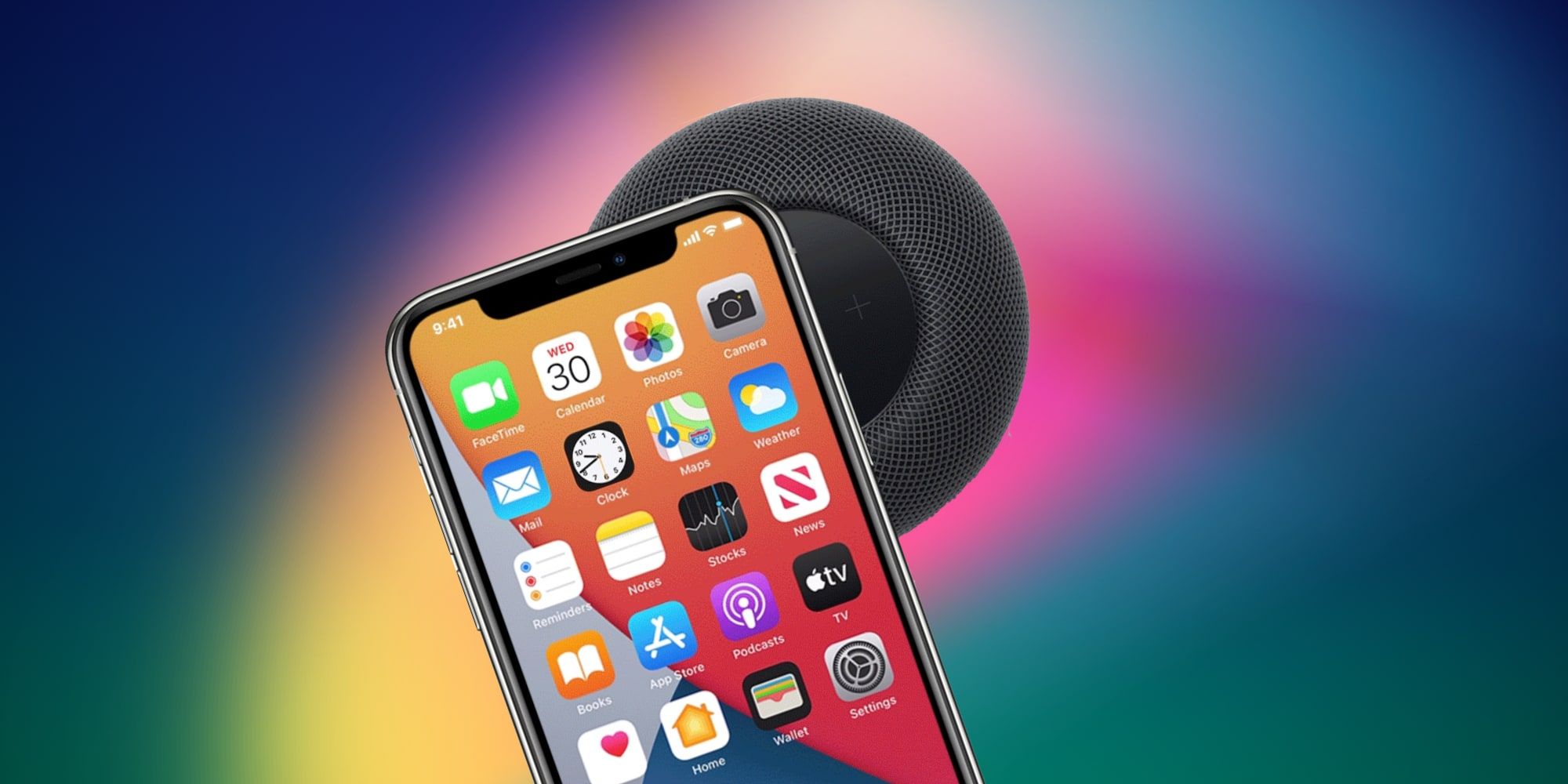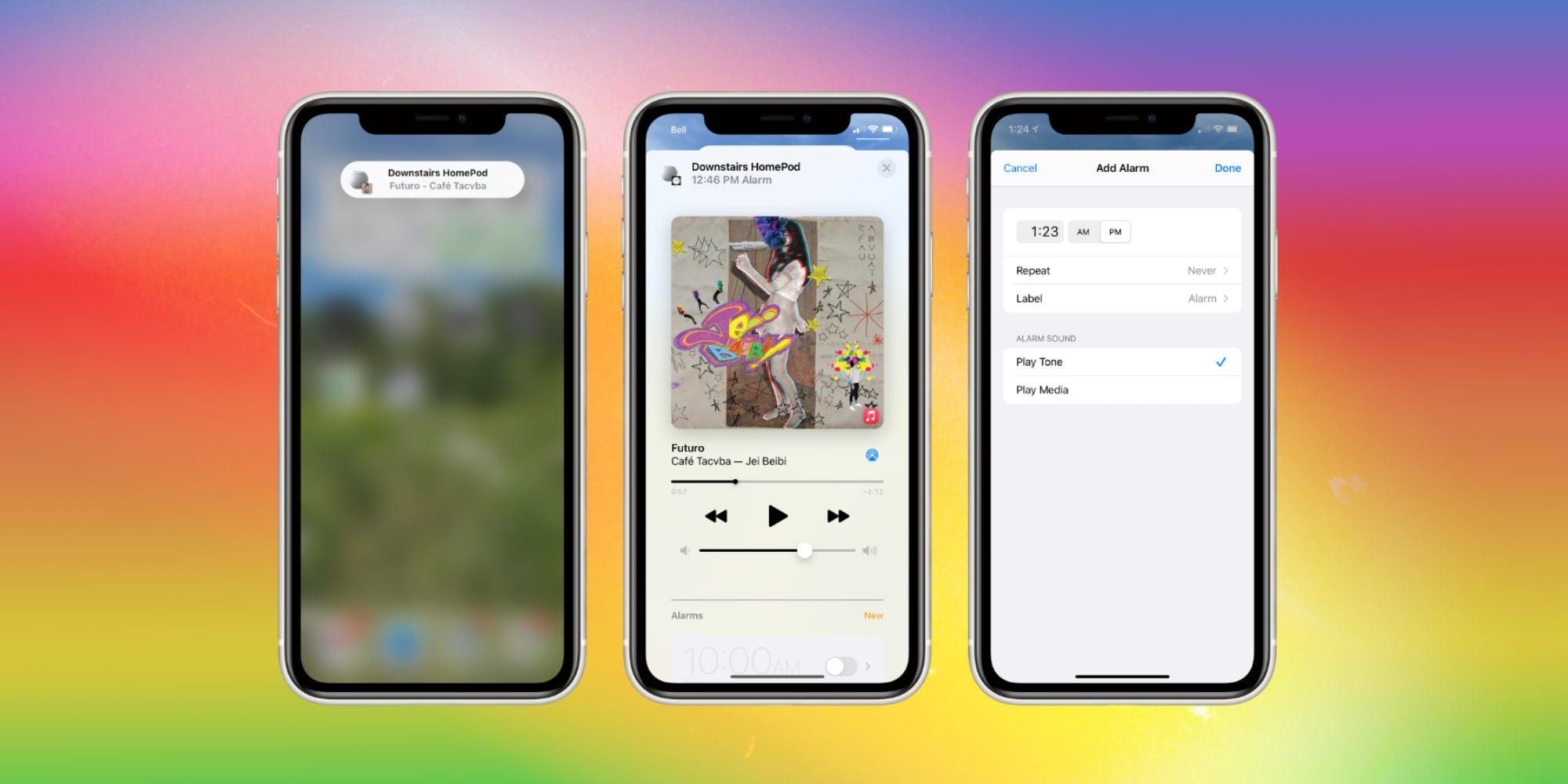Apple's HomePod mini is gaining new abilities with the latest 14.4 software update, but the changes will only be noticeable for users with an iPhone 11 or iPhone 12 smartphone. The new features are related to Apple’s custom U1 chip, found in those three devices, allowing ultra-wideband communication between them.
When Apple introduced the iPhone 11, it mentioned that it contained a new Apple chip called the U1, noting that it was for spatial awareness, but providing no further details about usage. The chip can send and receive signals in the ultra-wideband frequency range. This type of signal is also known as pulse radio, since it varies neither amplitude (as AM radio does) nor frequency (as FM radio does). Instead, ultra-wideband sends pulses separated by time over a very wide frequency range. This technology allows a large amount of data, in the gigabit per second range, to be transmitted over a short distance with low power.
With the 14.4 software update to the HomePod mini, Apple is making use of the U1 chip, which allows more accurate location-based communication with an iPhone 11 or iPhone 12. In short, the iPhone will provide increasing haptic vibrations as the phone is brought closer to the speaker, showing a notification on the screen and allowing quick access to HomePod controls. Haptic feedback of the iPhone begins at about eight to twelve inches from the speaker. The notification identifies the name of the HomePod mini and shows what song is playing or was last played. Tapping the notification or bringing the iPhone closer opens up a control panel focused primarily on music playback. Apple previously noted that the U1 chip gives devices directional awareness, but in this instance, it doesn’t matter which way the iPhone is oriented. It is simply a distance effect. Something similar was always available using Bluetooth on older phones, but the handing off of music happened without the haptic and visual interface.
New HomePod mini Controls
The new HomePod mini controls that appear on an iPhone 11 or iPhone 12 show cover art as well as media playback and volume controls. There is a position slider allowing the user to move to a particular location in a song, along with the usual back, play and forward buttons. In addition, the AirPlay icon allows switching music to another device. Touching the cover art for the song will open it in Apple Music. This provides a richer interaction for music playback with the HomePod mini when holding an iPhone, making it similar to streaming but freeing up the iPhone for other uses. While the HomePod mini hears well even when music is playing, it is a bit disruptive to be talking and interrupting the music just to change the volume, replay or skip a song. Of course, this can be done by tapping the top of the speaker, but the new music controls allow more nuance. Apple mentioned that the iPhone will also provide personalized music suggestions on the iPhone screen when it is next to the HomePod mini.
In addition to music controls, there is an Alarm option at the bottom, which Apple doesn’t mention in the update information. Tapping the Alarm control will bring up alarm controls on the iPhone screen to set the time the alarm will sound, whether the HomePod mini will play the default alarm tone or a selected song/media file, with options to create a custom label for the alarm and set it to repeat on a particular weekday. This degree of alarm customization will be difficult to achieve with voice commands alone, so it is a nice touch that Apple found a way to provide an interactive visual interface. While not a revolutionary update, it will likely prove to be both fun and useful to many, adding further value to the Apple ecosystem.
Source: Apple


